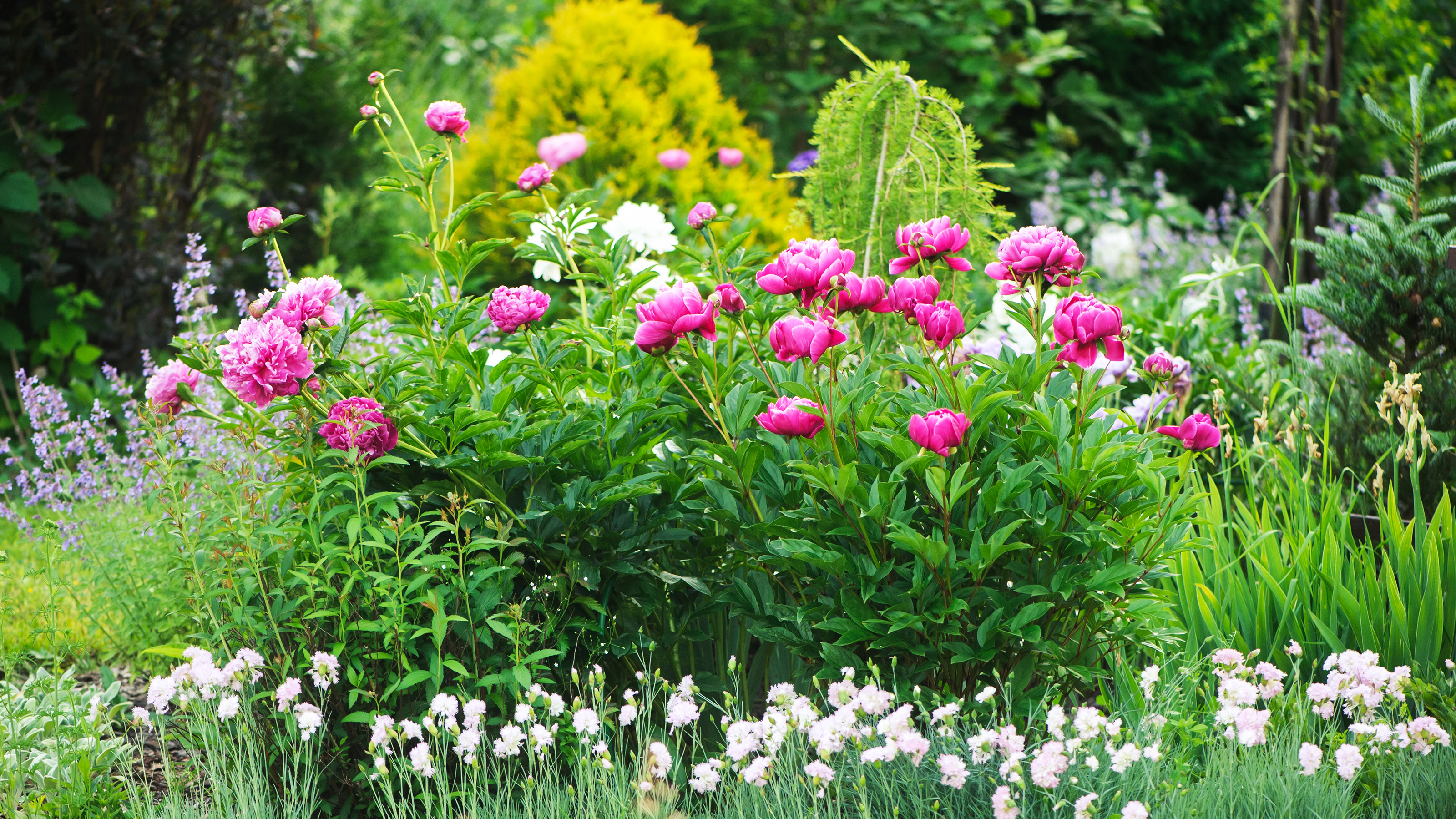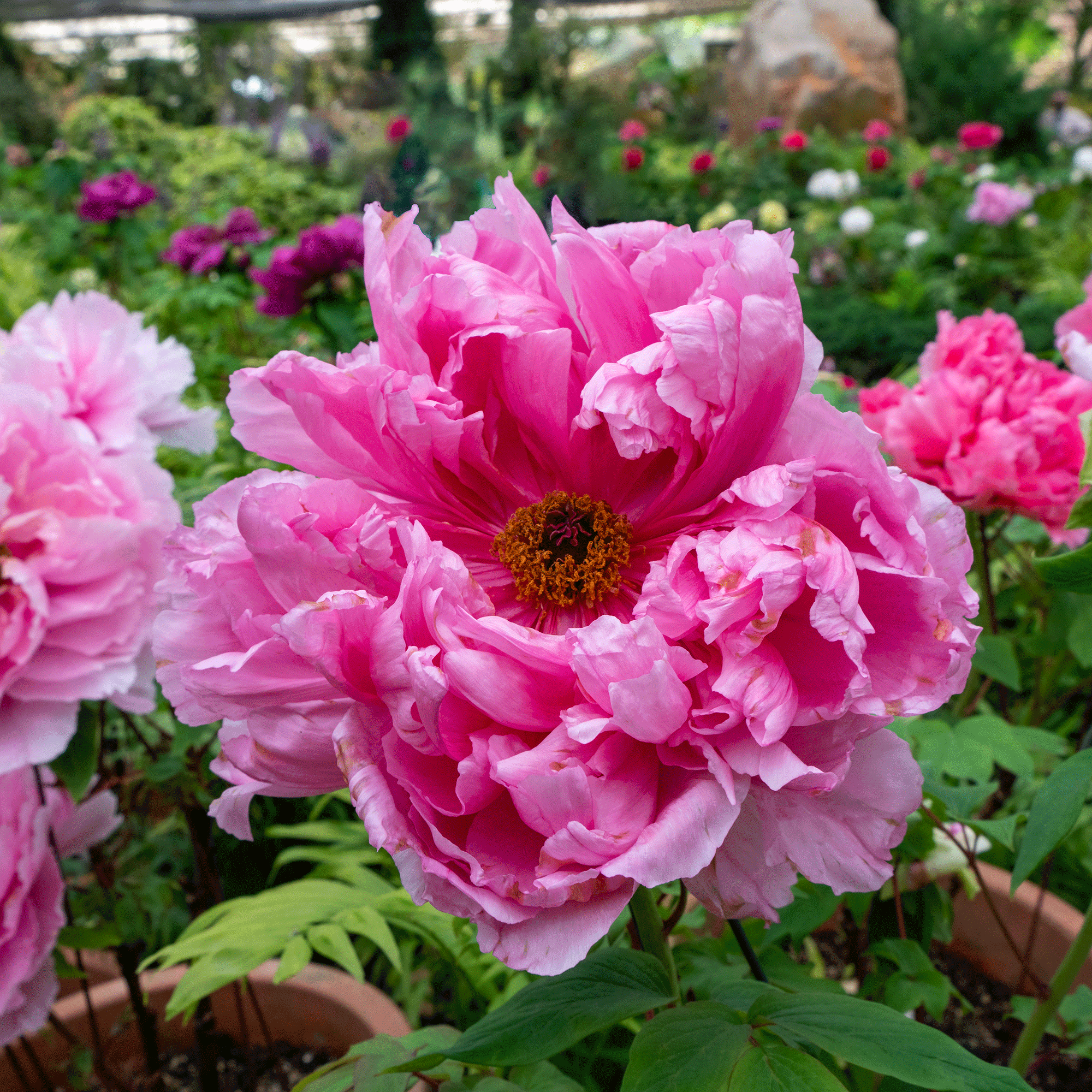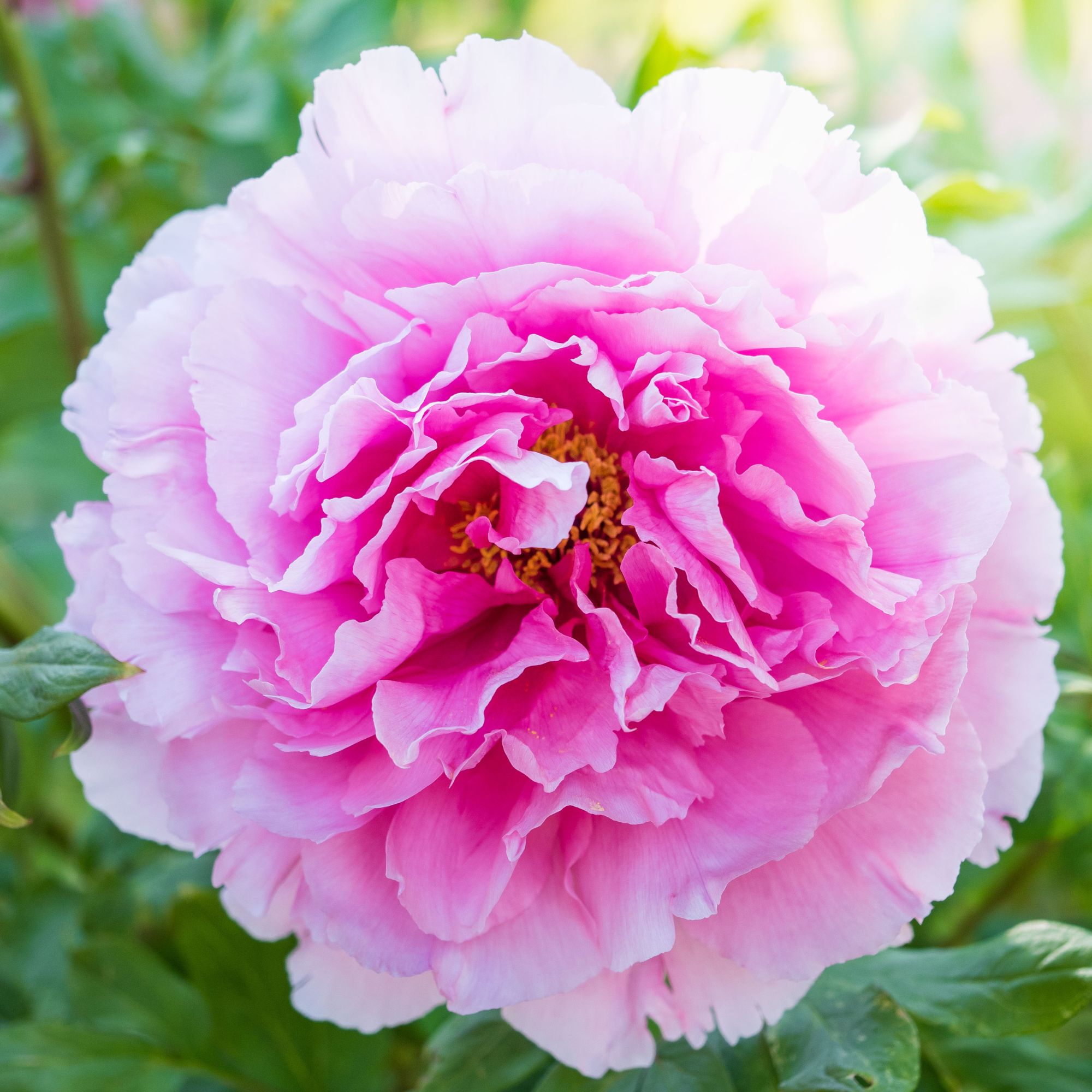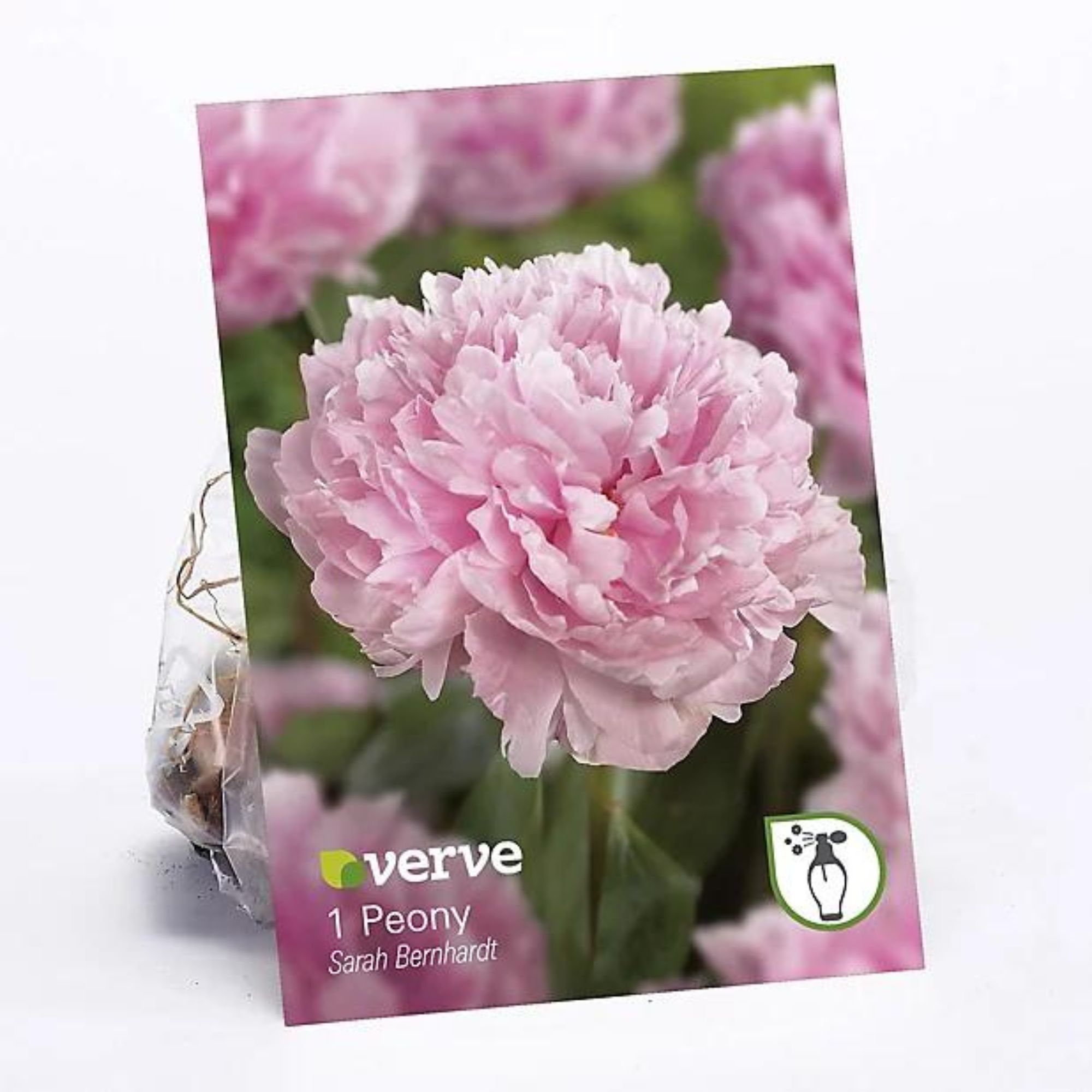Should you deadhead peonies? Experts reveal how you can get the most out of these romantic blooms
If you want your peonies to bloom year after year, you should listen up


With their big, bold blooms and their fresh, sweet aroma, peonies are some of the most romantic flowers out there. But while it’s easy to be distracted by their beauty, it’s important to give peonies the attention they deserve - and that’s exactly why you should be questioning whether you should deadhead peonies.
If you want to bring a cottage garden idea to life, peonies should definitely be on your wish list. And while peonies are pretty low-maintenance flowers, you still need to nail a few key pieces of information. For starters, you need to know how to plant peony bulbs or when to plant peonies. Then, you can focus your attention on keeping them alive.
But what you might not realise is that peonies have very specific care requirements - especially if you want to improve the appearance of your peonies and improve the blooms year on year. Thankfully, that’s where deadheading peonies can help.
Should you deadhead peonies?
Just as you would deadhead lupins, you should also deadhead peonies. In fact, gardening experts explain that this is an essential step in growing peonies - especially as they already have such a short flowering season.
Tony Williams, Estates Manager at Mount Ephraim Gardens, says, ‘Peonies are a beloved perennial, known for their lush, fragrant blooms that add a touch of elegance to any garden.’
‘To keep your peonies healthy and ensure they continue to produce stunning flowers year after year, it's essential to practice deadheading. This simple gardening task involves removing spent flowers and can significantly impact the overall vigour and appearance of your peonies.’
But why exactly should you deadhead peonies? Morris Hankinson, Director of Hopes Grove Nurseries explains, 'Peonies can produce seeds if spent flowers are left on the plant. While this isn't that harmful, removing spent flowers can prevent self-seeding and potentially invasive spread in your garden.’
Get the Ideal Home Newsletter
Sign up to our newsletter for style and decor inspiration, house makeovers, project advice and more.

Not only that but deadheading spent peony flowers can also encourage the plant to channel its energy down to its roots. Ultimately, this will improve the size, shape, and vibrancy of the flowers next year. This means that your peony flowers will just get better and better as the years go by.
Worst case scenario, failing to deadhead your peony plant could result in the spread of disease. While this doesn’t necessarily mean that you’ll kill your plant if you forget to deadhead it, it's important to understand that the health and appearance of your plant may suffer as a result.
Just make sure that you’re not making any deadheading mistakes, though. For starters, you should always choose the right time to deadhead peonies.

Morris says, ‘Ideally, it's best to deadhead peonies as soon as the blooms start to fade and the petals begin to fall off. This is typically in late spring or early summer, depending on the specific variety of your peonies.’
But the weather also plays a part in this essential gardening task. In fact, Tony suggests, ‘The best time to deadhead is on a dry, sunny day when the plant is not wet from rain or dew, as this helps prevent the spread of diseases.’
Unlike many other plants, though, you shouldn’t deadhead your peonies with your hands. Instead, you should use secateurs or scissors for this job - and always make sure that you clean your garden tools beforehand.

Morris explains, ‘I'd always advise using clean, sharp scissors or pruners to cut the spent flowers back to a set of healthy leaves or just above a leaf node. Be careful not to remove any new growth or buds!’
When you’re done, you can then dispose of your spent peony blooms by adding them to the compost. Tony advises against leaving them on the floor or around the plant as ‘this can attract pests and diseases.’

Tony is a keen and experienced gardener who has worked in horticulture across a variety of sites, including Canterbury Cathedral. He is extremely interested in sustainable gardening and strives to avoid polluting chemicals in fertiliser and pest control. He is dedicated to preserving natural resources and reducing water waste wherever possible.

Morris Hankinson is the founder and managing director of Hopes Grove Nurseries Ltd, the UK’s only specialist grower-retailer of hedging plants. He established the thriving business in 1992, shortly after graduating with a Commercial Horticulture Degree from Writtle College, Essex.
What you'll need
FAQs
How do you keep peonies blooming all summer?
Peonies may be some of the most beautiful blooming flowers, but they’re also some of the shortest. Most peonies only bloom for around 7-10 days, which means you only get a short window to enjoy them in your garden and make the most of taking peony cuttings and propagating them.
You can combat this by planting different varieties of peonies in your garden. As different varieties bloom at different times (some bloom early, while others bloom late), you can mix and match these peonies and enjoy the flowers for a longer period of time.
In fact, if you plan your peony planting properly, you could be rewarded with six weeks of uninterrupted peony blooms.
Can peonies bloom twice?
Each individual peony flower will only bloom once a year, but it’s important to note that one plant offers multiple flowers - and they all bloom at different times. So, while peony flowers typically only bloom for 7-10 days, these flowers don’t always bloom at the same time.
However, when each individual flower has bloomed, it won’t bloom again until the next flowering season.
So, make sure you’re deadheading your peonies this year.

Lauren Bradbury has been the Content Editor for the House Manual section since January 2025 but worked with the team as a freelancer for a year and a half before that. She graduated with a Bachelor’s degree in English and Creative Writing from the University of Chichester in 2016. Then, she dipped her toe into the world of content writing, primarily focusing on home content. After years of agency work, she decided to take the plunge and become a full-time freelancer for online publications, including Real Homes and Ideal Home, before taking on this permanent role. Now, she spends her days searching for the best decluttering and cleaning hacks and creating handy how-to guides for homeowners and renters alike, as well as testing vacuums as part of her role as the Ideal Home Certified Expert in Training on Vacuums, having spent over 110 hours testing different vacuum models to date!
-
 Wood drenching is the calming new twist on the colour drenching trend – here’s how to make the look work in your home
Wood drenching is the calming new twist on the colour drenching trend – here’s how to make the look work in your homeIt’s easier than ever to embrace natural materials
By Maddie Balcombe
-
 Aldi is launching a £200 day bed with four different features - its sleek design is suited to the whole family
Aldi is launching a £200 day bed with four different features - its sleek design is suited to the whole familyYou don't want to miss out on this Specialbuy
By Kezia Reynolds
-
 How to set up a drip watering system that saves water and a lot of effort
How to set up a drip watering system that saves water and a lot of effortKeep your plants hydrated (and your water bill down) with this clever garden watering solution
By Natalie Osborn


